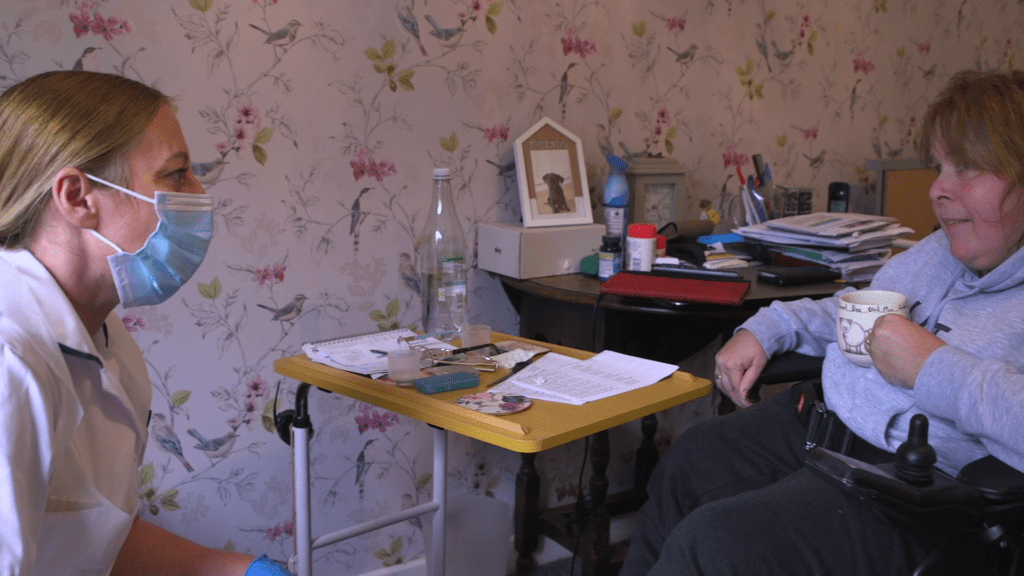Living with disabilities or mobility challenges can present unique obstacles, but with the help of assistive devices and adaptive equipment, individuals can regain control of their lives and achieve greater independence. These tools are designed to support people in performing daily activities and tasks, ultimately promoting a higher quality of life. In this blog, we will explore the significance of assistive devices in enhancing independence at home and how they empower individuals to lead fulfilling lives.
Understanding Assistive Devices and Adaptive Equipment
Assistive devices and adaptive equipment encompass a wide range of tools tailored to address specific challenges faced by individuals with disabilities. These aids are designed to bridge the gap between limitations and possibilities. Here’s a closer look at their roles:
Definition and Scope
So what is an assistive device and what do they do? Assistive devices refer to any tool, product, or equipment that enables people with disabilities to function more effectively in their daily lives. Adaptive equipment is specially designed to suit an individual’s unique needs, making tasks easier to perform.
Types of Assistive Devices
There are various categories of assistive devices, including mobility aids (wheelchairs, walkers, canes), communication devices (AAC tools, speech-to-text software), and daily living aids (adaptive utensils, dressing aids). Each type addresses specific challenges and enhances independence in various aspects of life.
Personalized Assessment and Consultation
Choosing the right assistive device requires personalized assessments and consultations. Healthcare professionals and occupational therapists play a vital role in determining the most suitable tools based on the individual’s needs, preferences, and home environment.
Enhancing Mobility and Accessibility at Home
Having a home be accessible and easy to navigate around can be an incredibly useful tool. It can prove beneficial in both a mental and physical capacity to someone for them to be able to retain their independence within their home. Being able to enhance mobility and accessibility within the home can be really important. Here are some ways that his can be achieved:
Mobility Aids: Mobility aids like wheelchairs, walkers, and canes are essential for individuals with limited mobility. They provide stability and support, enabling users to move around their homes with confidence and ease.
Home Modifications: Home modifications, such as installing ramps, grab bars, and stairlifts, make living spaces more accessible. These modifications not only enhance independence but also promote safety and prevent accidents.
Smart Home Technology: Advancements in smart home technology have revolutionized accessibility. Voice-activated assistants and adaptive software allow individuals to control various aspects of their home environment independently.

Promoting Communication and Independence
One main benefit of assistive devices is the way that they can promote a persons independence within their home in a vast number of ways. There are many types of devices that can play a role in this.
- Communication Devices: Augmentative and alternative communication (AAC) tools help individuals with speech or language impairments to communicate effectively. These devices may range from picture-based communication boards to sophisticated electronic devices.
- Voice-Activated Assistants: Voice-activated assistants like Amazon’s Alexa or Google Assistant can be powerful tools for individuals with physical disabilities. They enable users to control smart home devices, access information, and perform various tasks using voice commands. This can be especially useful to those who may experience from poor eyesight.
- Adaptive Software: Adaptive software and applications are designed to cater to individuals with cognitive or learning challenges. They offer personalized learning experiences and support, fostering independence and skill development. Some examples of adaptive may include a text-to-speech which can type spoken words into a computer; ‘Narrator’ which can read aloud typed characters on screen and announce notifications and events that are on screen to a user amongst many others.
Daily Living Aids for Independence
There are also a variety of physical daily living aids that can help to promote physical independence for an individual within their home. We have listed a few below that you could consider trying:
- Adaptive Utensils: Adaptive utensils with modified grips and ergonomic designs assist individuals with limited hand dexterity or weakness in feeding themselves independently.
- Dressing Aids: Dressing aids such as button hooks, zipper pulls, and dressing sticks simplify the process of getting dressed, allowing individuals to maintain their independence in personal care.
- Medication Management: Assistive technology can be used to manage medication schedules, ensuring individuals take their medications on time and promoting better health outcomes.
Considerations for Choosing Assistive Devices
There are a multitude of things that can be considered when deciding whether assistive devices are something you or somebody you care for could benefit from. Some things to keep in mind are:
Individual Needs and Preferences:
When selecting assistive devices, it’s crucial to consider the individual’s specific needs, preferences, and abilities. What works for one person may not be suitable for another.
Trials and Evaluations:
Before purchasing an assistive device, it’s advisable to try out different options through trials and evaluations. This ensures a proper fit and functionality, leading to a more successful outcome.
Funding Resources and Support Networks:
Explore funding resources, insurance coverage, and support networks that can assist in acquiring necessary assistive devices. Many organizations and charities offer financial aid to individuals in need.
Assistive devices and adaptive equipment serve as powerful tools to enhance independence at home for individuals with disabilities or mobility challenges. By understanding the wide range of options available and seeking personalized assessments, individuals can regain control of their lives, increase their autonomy, and embrace newfound opportunities. Embracing technology and innovation, we can create inclusive living spaces that empower everyone to lead fulfilling and independent lives. With assistive devices by their side, individuals can confidently navigate the world and realize their full potential, regardless of any challenges they may face.





